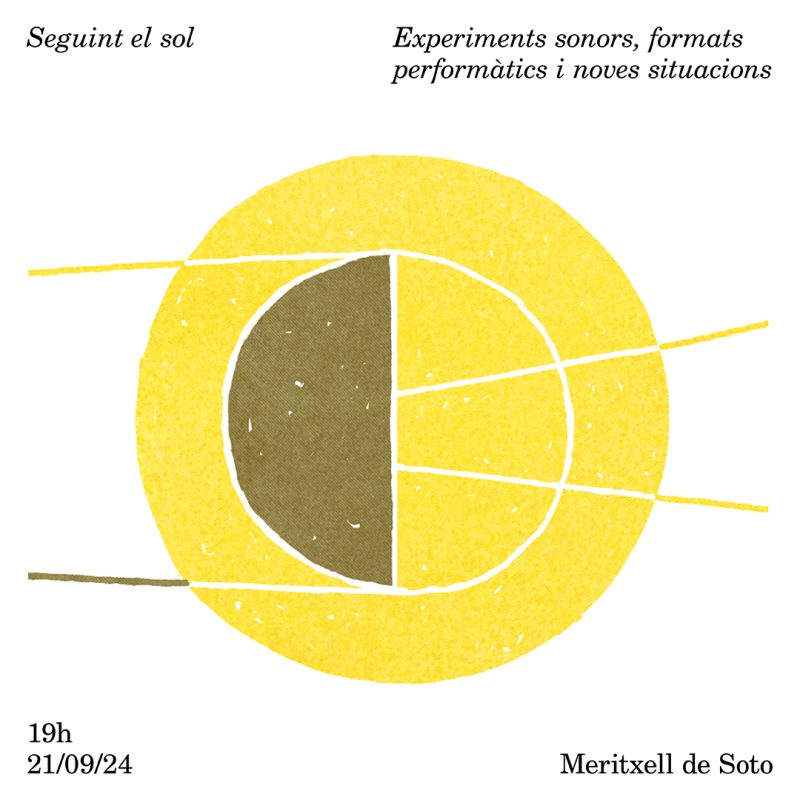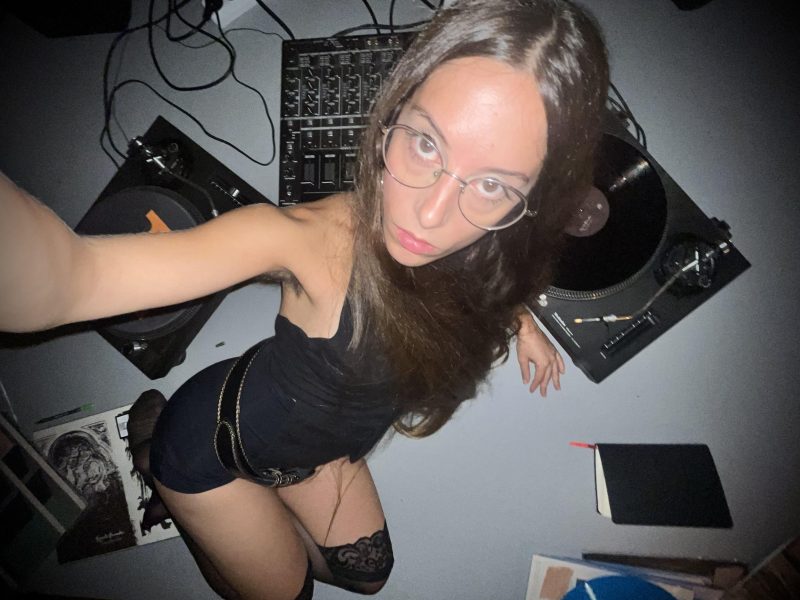On January 16 the Museu Tàpies will be closed at 5 pm. Thank you for your understanding

On January 16 the Museu Tàpies will be closed at 5 pm. Thank you for your understanding


Dates
21.09.2024 | 19:00-21:00
Category
Public Programme
Meeting point
Museu Tàpies
Price
€12. Reduced price for individuals under 30 years old and for students.

The roof of the Fundació Antoni Tàpies is to become an experimental playground for Opimelissa, a collective who cook, sing, dance and lots more. We’ll be following the sun with the gentle irony and humour of Júlia Barbany, the architecture of the catchy electrosong of Petit Ibèric, the philosophical canticles of Max Grosse about the life and lovesickness of an odd sock with a hole in it, the egodilirium of the sharp-penned dramatist and writer Berta Prieto (if you don’t know who she is yet, you’re living in a cave!), the rhythm of DJ, performer and militant for self-governance Meritxell de Soto, the overflowing energy of tender, multi-faceted punkmother Belén Barenys, the experimental Latin music of Deprerreo, the contorted body of Candela Capitán, who denounces the sexualisation of women through convulsive metrics.
Fifth session of the programme Following the Sun, an experimental series of sound and stage performances, presenting nine new sessions by young creative talents. The programme, curated and produced by Carolina Olivares Esturillo, aims to promote the youthful, inexhaustible energy of artists to light up and give new life to Tàpies’ solitary sock that presides over the Fundació’s roof terrace.
Sixth session: Meritxell de Soto
Meritxell de Soto presents Ultra Femme Frequencies, a vinyl DJ set of drones and atmosphere, where the music is not only heard, but lived. In this piece, De Soto challenges the technical conventions of DJing, often associated with traditional masculinity, through the choreographic practice of tapping with the whole body, an investigation he has developed together with the dancer and choreographer Guillem Jiménez. The sound layers immerse the listener in a space of stillness and expansion, evoking a tactile sensuality: the vibration travels from the frequencies to the skin, establishing a dialogue between the sound and the body. Here, the technique is transformed into choreography, turning the body into an extension of the sound. Part of the choreographic movements are inspired by gestures taken from DJ archives, re-contextualized in a performative space and impregnated with elements of Bimbo culture. The work proposes a re-reading of the act of piercing from the perspective of provocation, play and irony, exploring new territories on the periphery of outdated paradigms and hot takes.
Meritxell de Soto is an artist who challenges the boundaries between sound and performance, investigating how sound devices interact with physicality and power dynamics. His work deals with topics such as the construction of gender, identity and eroticism, using sound to question and reimagine these concepts. De Soto creates spaces where the boundaries between the performer and technology are blurred, generating sensory experiences that invite reflection on the body as a place of agency.
In projects like Espai Segur, he subverts the traditional norms of DJing, integrating his body into the action of punching and encouraging a critical dialogue about care and safety in high-intensity environments, often dominated by traditional masculinity.
On a conceptual level, Meritxell de Soto’s work is a constant exploration of how sound and popular spaces can become platforms for critical reflection. He has performed at festivals and parties such as Sónar (BCN), Tremor (PGL), Keep Hush (UK) and Ankali (PRG), and has participated as a performer with the LASADCUM company at Teatros del Canal and Centre de Cultura Contemporània de Barcelona (CCCB), among others. His piece Espai Segur has been presented at the Gayte Lyrique in Paris and Casa Monjuïc, in Barcelona. In addition, he has been part of the round table Dance Dance Revolution, at Sónar+D, and is currently curating the electronic music festivals Tresor, at the CCCB.
His practice as a DJ is characterized by the hybridization of musical genres, focused on the deconstructed club sound, with a critical look at how these sound choices impact the collective experience of the public, promoting the creation of communities.
Technical details:
· Creative direction and interpretation: Meritxell de Soto
· Choreography and Movement collaborator: Guillem Jiménez
· Styling: Romina Puga
· Programme curated and produced by Carolina Olivares Esturillo
· Design: Ana Habash and Ignasi Ayats.
· Illustrated by: Eduard Sales
· Ticket sales through the website and at the box office of Museu Tàpies. Limited capacity.

Dates
21.09.2024 | 19:00-21:00
Category
Public Programme
Meeting point
Museu Tàpies
Price
€12. Reduced price for individuals under 30 years old and for students.